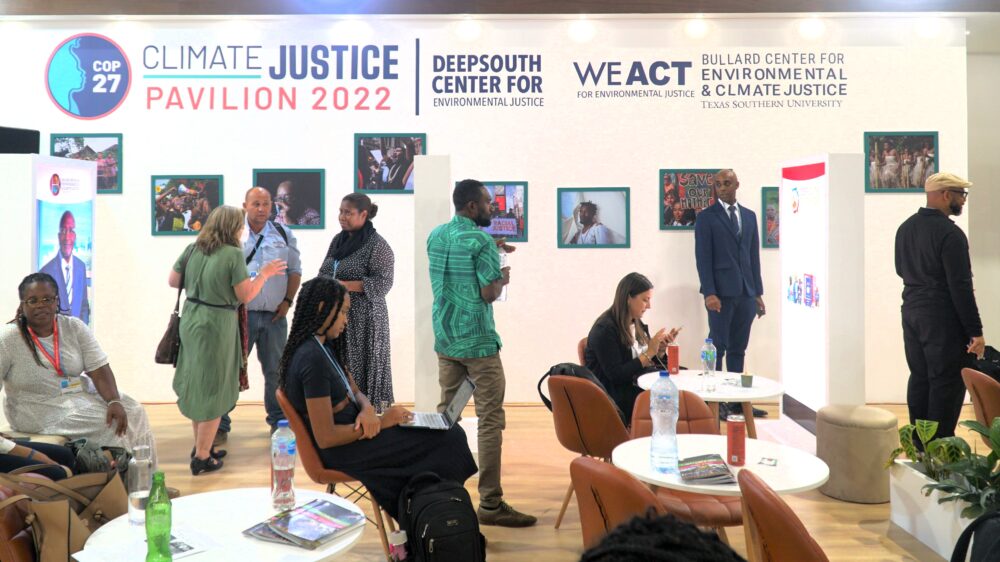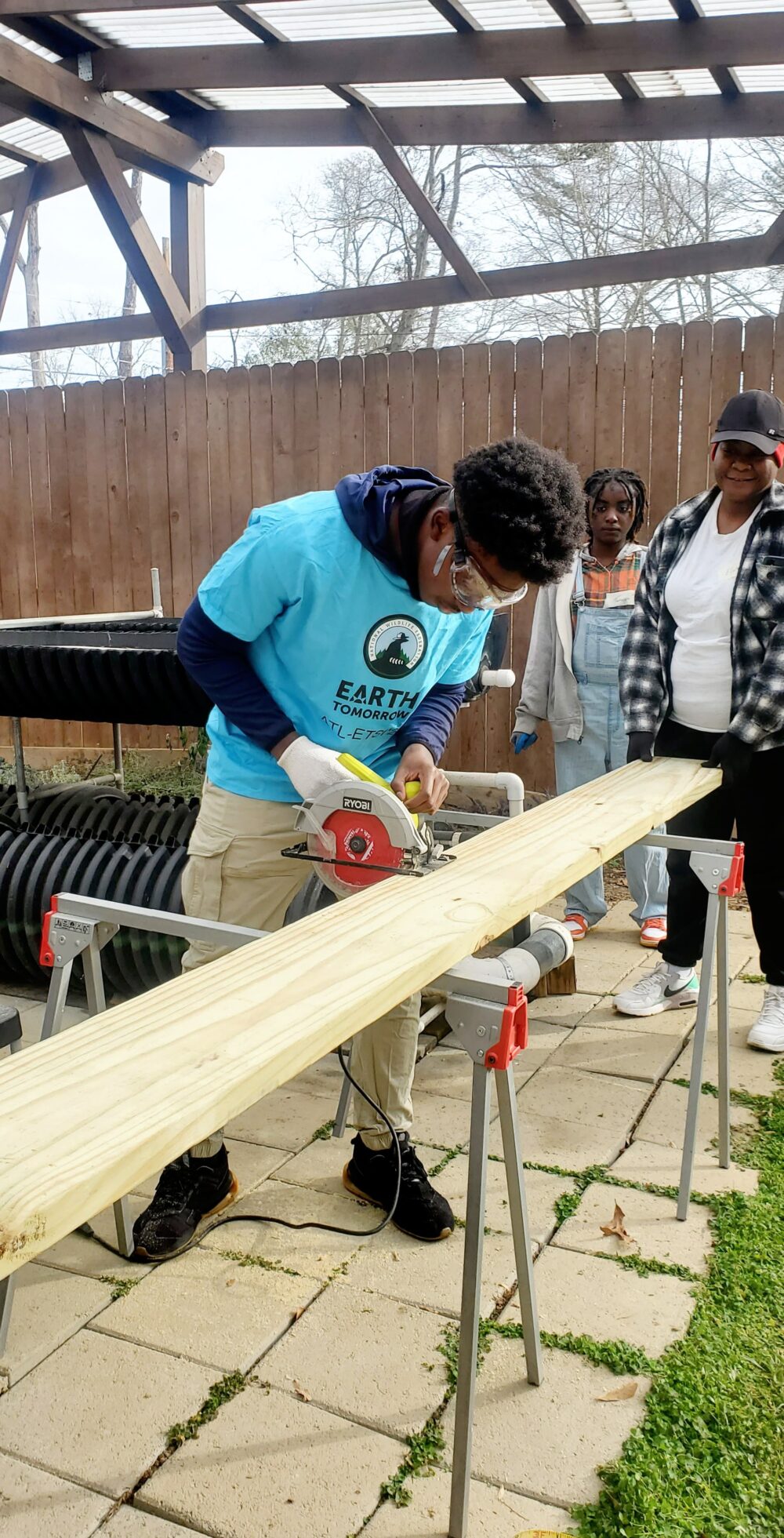We have much more to do and your continued support is needed now more than ever.
University of Florida Strives to Surpass LEED
For universities serious about reducing their carbon footprint, compact fluorescent light bulbs just won’t cut it. Many are starting, quite literally, from the ground up, building highly efficient dorms, classrooms and libraries that can not only cut their carbon emissions but also boost their campus image.
About 260 university buildings across the nation have received a thumbs-up from the U.S. Green Building Council in Leadership for Energy and Environmental Design (LEED) certification, the national benchmark for green building. Another 1,600 campus buildings have registered for certification.
“Campuses are always on the cutting edge of greener construction,” said Melissa Gallagher-Rogers, higher education sector manager at the USGBC. “The universities see themselves as innovators.”
Much of the credit is due to enthusiastic students, she said, who expect greener buildings on their campus. In the case of Oberlin College, Gallagher-Rogers said, some students have chosen their school because of its commitment to green.
Gallagher-Rogers said the USGBC saw a significant surge in greener building on campuses in 2007 when energy prices reached all-time highs. But with green campuses so commonplace these days, some universities are going above and beyond LEED certification to prove their prowess.
Down south, the University of Florida is evidence that campuses can have both quality and quantity when it comes to green building.
The 17.4 million square foot Gainesville campus is cutting back on their $2.5 million monthly energy bill by constructing highly efficient buildings. In 2001 the university adopted LEED criteria for all major new construction and renovation projects in the future. In 2006, they upped the ante and required LEED Silver certification for all new construction. So far the campus has ten LEED certified buildings with another 55 registered – the most of any college in the nation.
“We are really big and we know we had a big footprint and we wanted to do whatever we can to minimize that footprint,” said Bahar Armaghani, assistant director of Facilities, Planning and Construction at UFL. “As an educational institution we feel it is our duty to walk the talk.”
Under Armaghani’s leadership, UFL constructed Rinker Hall in 2003, the state’s first LEED Gold-certified building. And the green movement has snowballed ever since.
The university’s biggest savings come from water reclamation. Boasting its own wastewater treatment and irrigation systems, the campus collects more than 2.5 million gallons of reclaimed water a day and uses it to irrigate native landscaping, an aspect that only boosts the Gators’ LEED report card.
All ten of the university’s LEED-certified buildings used 87 percent or more recycled materials in construction-such as concrete, metal and wood – earning the university additional credits. To reduce the heat island effect, buildings have been outfitted with light-colored roofs, and in the case of the Charles R. Perry Construction Yard, a 2,600 square foot green roof. By purchasing green power credits for every project, the university offsets 70 percent of its carbon footprint.
Standards have been set for future construction as well, guaranteeing the use of waterless urinals and dual flush toilets, occupancy sensors and glazed windows. All of these innovations add up to about a 30 percent savings in energy costs for the campus.
A university benefits from greener building in a variety of other ways. One, Gallagher-Rogers said, is marketability: “It’s not only saying you’re green but proving it.”
“We have been lucky to not have to convince the administration to build green,” Armaghani said. “They are all on board with this.”
Despite the fact that UF is already leading the way in green building, Armaghani insisted they are not near to being done. She’s right. Although UF boasts the most LEED certified and registered buildings – 65 in total – the campus is home to a staggering 1,932 structures.
“We still have a lot to do; I think we should be doing even more.”
For one, Bahar wants at least Gold certification for all new construction. She would also like to see LEED certification for smaller projects. (Currently the university only applies LEED criteria to projects exceeding $1 million.)
But she’s not stopping there.
“We need to beef up the envelope,” Armaghani said, referring to the skin or exterior of a building. The tighter the envelope, the less energy wasted. She also wants to see more use of energy recovery systems such as reusing chilled water to power HVAC systems.
And instead of purchasing green power credits, Armaghani would like the campus to be self-sufficient by installing photovoltaic cells on buildings.
Currently, three of the campus’ LEED certified buildings are outfitted with touch-screen dashboards in their lobbies, allowing visitors to view the buildings’ energy output. Armaghani said her team is working to place these dashboards in every building and connecting them to the web for 24/7 monitoring.
“We haven’t been focusing on the carbon and I think we’re probably going to do that more in future,” she said.
With President Bernard Machen’s signature on the American College and Universities Presidents Climate Commitment and a promise to become carbon neutral by 2030, the university has a lot of work ahead of them. But for Armaghani, it’s all in a day’s work.
“This is all becoming part of our regular practice,” she said.
See More:
Measuring the Life Cycle of a Facility: GreenerBuildings
LEED: Prioritizing Energy Efficiency: ClimateEdu
Retro-Commissioning: The First (Big) Step to Reducing Your Campus Carbon Footprint: EH&E




















